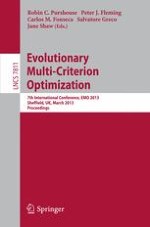This book constitutes the refereed proceedings of the 7th International Conference on Evolutionary Multi-Criterion Optimization, EMO 2013 held in Sheffield, UK, in March 2013. The 57 revised full papers presented were carefully reviewed and selected from 98 submissions. The papers are grouped in topical sections on plenary talks; new horizons; indicator-based methods; aspects of algorithm design; pareto-based methods; hybrid MCDA; decomposition-based methods; classical MCDA; exploratory problem analysis; product and process applications; aerospace and automotive applications; further real-world applications; and under-explored challenges.
